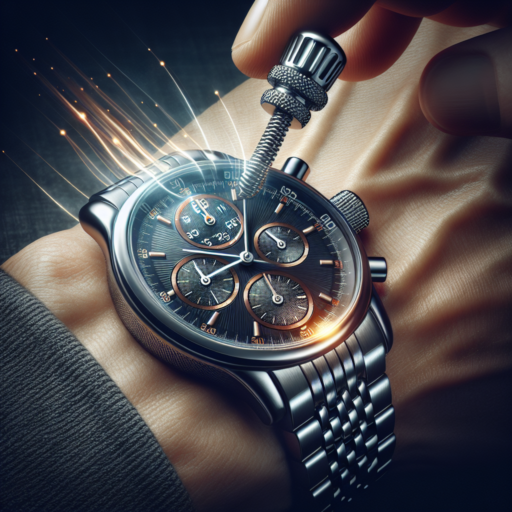Do smartwatches have timers?
When it comes to the utilities packed within the sleek frame of a smartwatch, timers are a fundamental feature that often sparks curiosity. The simple answer is yes, the majority of smartwatches come equipped with timer functionality. This feature is as integral as telling time itself, reflecting the device’s purpose of serving as a versatile tool for managing our day-to-day tasks and activities.
The functionality of timers in smartwatches has evolved to offer more than just counting down seconds. Users can access various types of timers, including countdown timers, interval timers, and even specialty timers designed for specific activities like cooking, exercising, or meditating. This versatility showcases how smartwatches are more than just timekeepers; they are personal assistants strapped to our wrists.
Incorporating timers into the user interface (UI) of a smartwatch requires careful consideration to ensure ease of use. Manufacturers typically implement this feature in a way that allows for quick access and simple operation. This is crucial in maintaining the device’s utility during moments when time is of the essence. From a basic countdown for baking to a complex interval setup for high-intensity interval training (HIIT) workouts, the integration of timers speaks to the smartwatch’s role in enhancing productivity and facilitating lifestyle management.
What is the difference between a timer and a stop watch?
Understanding the difference between a timer and a stop watch is crucial for various applications, whether in sports, cooking, or study sessions. At first glance, timers and stopwatches might appear to perform similar functions, but they serve distinctly different purposes based on their operational mechanisms and end use. Here, we’ll delve into the specifics that set them apart, helping you choose the right tool for your needs.
A timer is fundamentally designed to count down from a specified time interval and typically signals the end of that period with an alarm. This tool is indispensable in scenarios where you need to measure a set duration—a perfect example being baking, where precision in timing is non-negotiable. On the other hand, a stop watch is engineered to measure the amount of time elapsed from a given starting point, stopping at the user’s discretion. It’s a go-to device for activities requiring the tracking of duration such as lap times in athletic training or speed runs in gaming.
The operational difference underscores their applications; timers are about counting down to zero from a preset time, whereas stopwatches are about counting up from zero. This fundamental distinction showcases their versatility—while a timer is used to anticipate an event’s end, a stopwatch measures how long an ongoing event lasts. The precision in using either can immensely affect outcomes in both professional settings and daily life activities.
No se han encontrado productos.
What is a timer watch?
A timer watch is a versatile timekeeping device equipped with a mechanism designed to measure and display the duration of an event or activity. Unlike a traditional watch that primarily displays the current time, a timer watch allows users to set a countdown or count-up timer, making it a valuable tool for various scenarios ranging from sports and exercise to cooking and studying.
These watches come in various forms, including digital, analog, or a combination of both, to cater to different preferences and needs. Digital timer watches often feature more complex functionalities like multiple alarm settings, intervals, and sometimes even GPS and heart rate monitoring for athletic training. Analog timer watches, while less feature-rich, appeal to those seeking simplicity and elegance.
Further enhancing their utility, many timer watches offer additional capabilities like water resistance, making them suitable for swimming or diving, and shock resistance for more rugged activities. Whether for professional athletes, diligent students, or hobbyist cooks, a timer watch is an indispensable tool that combines functionality with precision.
How to set time timer watch?
Setting the time on a timer watch is an essential skill for managing your day more effectively. Whether you have just purchased your first timer watch or are looking to refresh your memory, the process is straightforward. In this guide, we’ll walk you through the steps to ensure your timer watch is set accurately, enhancing your time management and productivity.
Understanding Your Timer Watch Buttons
Before diving into the setting process, familiarize yourself with the buttons on your timer watch. Typically, you will find a «Mode» button, an «Adjust» button, and sometimes «Start/Stop» and «Lap/Reset» buttons. These controls are crucial for navigating through your watch’s features and making adjustments.
Steps to Set the Time
- Press the «Mode» button repeatedly until you see the time setting screen. This screen often displays the hour blinking, indicating you are in the correct mode to set the time.
- Use the «Adjust» button to change the hours. Pressing this button will cause the hours to increase. In some watches, holding down the «Adjust» button may allow the hours to run rapidly.
- Once the correct hour is displayed, press the «Mode» button again to shift the blinking to the minutes. Use the «Adjust» button similarly to set the correct minutes.
- If your watch has a seconds feature, you might need to reset the seconds to zero for precise timing. This can usually be done by pressing the «Lap/Reset» button while the seconds are blinking.
- After setting the correct time, press the «Mode» button once more to exit the setting screen. Your timer watch should now display the correct time.
Remember, setting the time on your timer watch correctly is crucial for accurate timekeeping and making the most out of its functionalities. Whether you’re timing your workouts, work sessions, or daily routines, a properly set timer watch can be a game-changer in how you manage and utilize your time.




